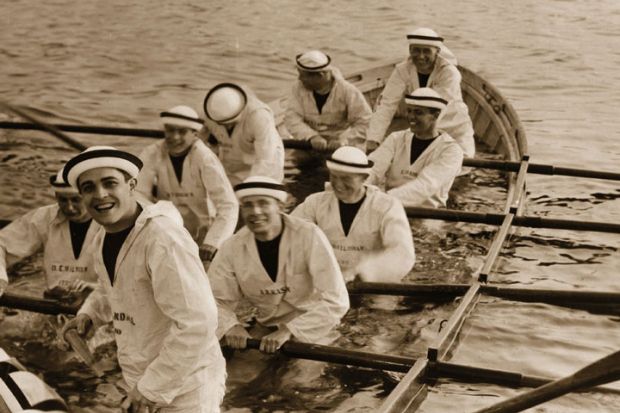Large falls in undergraduate recruitment in 2019 have added to several years of declining numbers at some UK universities, according to the latest data from the country’s admissions body.
Four English institutions where Ucas recruitment is now down by more than a fifth in five years saw further drops again last year, according to end-of-cycle data on the number of applicants to full-time undergraduate courses accepted by universities in 2019.
Overall, the figures show that for institutions placing more than 1,000 UK or European Union students through Ucas, about half recorded a fall in recruitment compared with 2018, with this drop being higher than 5 per cent at about a quarter.
At a dozen institutions, the 2019 fall contributed to a double-digit percentage decline in numbers since 2014.
This includes both post-92 and pre-92 universities, including the University of Chester (down 19 per cent on 2018, 28 per cent on 2014), Solent University (down 15 per cent on 2018, 32 per cent on 2014), the University of Sheffield (down 8 per cent on 2018, 16 per cent on 2014) and the University of Southampton (down 5 per cent on 2018, 16 per cent on 2014).
Martine Garland, lecturer in marketing at Aberystwyth University, whose research has examined financial diversification in UK higher education, said that although fierce competition in recent years had affected the Ucas recruitment numbers at some post-92 universities, many had employed “a deliberate strategy” to reduce their dependence on “the volatile tuition fee market”.
“Notable successes include investment in research capability and renting out student accommodation plus teaching facilities to English language schools in the summer,” she said, activities that often created more of a surplus. “Many post-92 universities recognised there were greater margins to be had in other activities.”
Dr Garland said that research-intensive universities seeing falls in undergraduate numbers in any one year – or even over a longer period of time – might not be concerned about such a trend.
Interviews with senior leaders that she had conducted for her research indicated that such universities were financially diversified enough to be able to take risks with some sources of income in order to pursue others.
“Certainly a couple of the Russell Group universities I spoke to indicated they were content with falls in student numbers – as long as they weren’t international students,” she said.
Meanwhile, Leigh Rengger, Solent’s chief marketing officer, said the information from Ucas “does not account for the many other ways in which students enter the university, for example through direct applications”.
“We have also been successfully focused on growing our postgraduate and international numbers, on our expanding apprenticeships programme, and on our ongoing work to develop and reshape our portfolio and curriculum to maximise student success,” he said.
Elsewhere, the Ucas data show that some universities – again including both pre-92 and post-92 institutions – have continued to expand massively in terms of Ucas-based recruitment.
Coventry University now recruits almost double the number of UK and EU students this way compared with 2012 after a 21 per cent rise in 2019. Among the Russell Group, King’s College London saw the biggest rise last year, up 11 per cent on 2018, while the University of Bristol was up 9 per cent, adding to an expansion in such recruitment of 25 per cent since 2014.
Find out more about THE DataPoints
THE DataPoints is designed with the forward-looking and growth-minded institution in view




